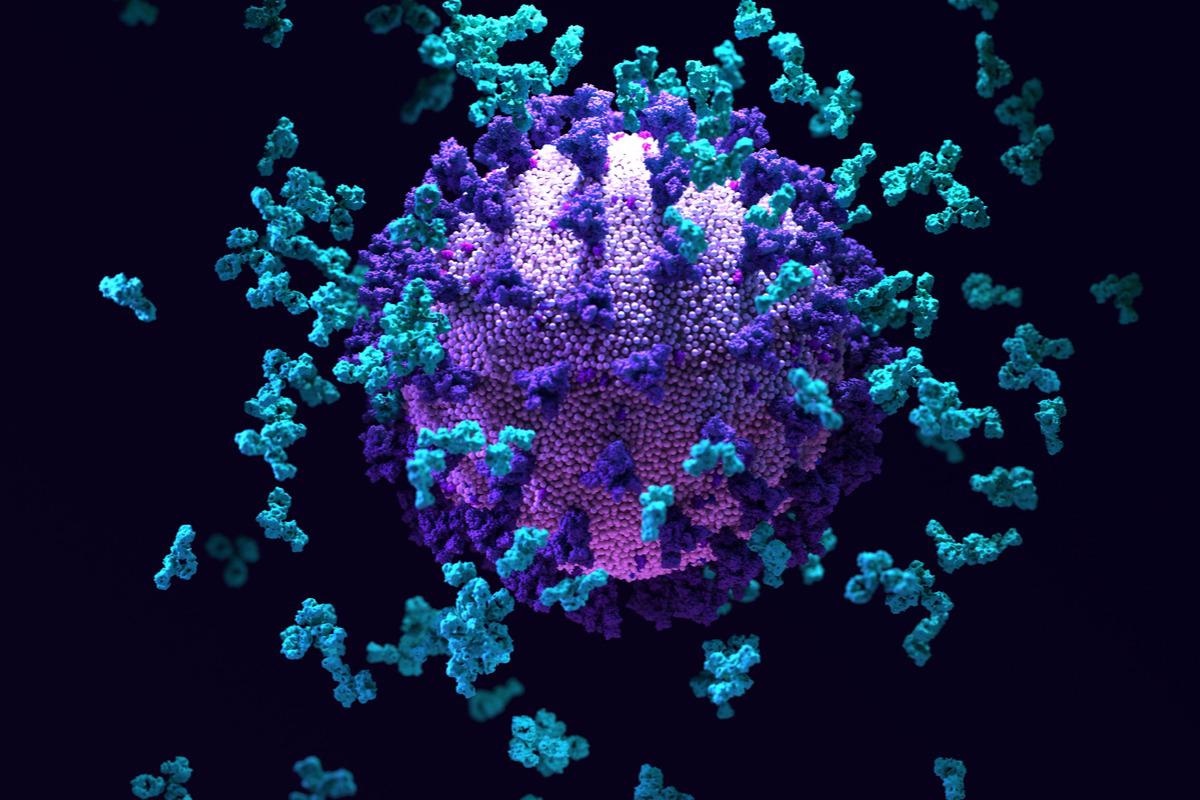In a recent study posted to the medRxiv* preprint server, researchers assessed the induction of variant-specific neutralizing antibodies against the severe acute respiratory syndrome coronavirus 2 (SARS-CoV-2) spike (S) and nucleocapsid (N) proteins of several SARS-CoV-2 strains.
 Study: Omicron infection induces low-level, narrow-range SARS-CoV-2 neutralizing activity. Image Credit: Design_Cells/Shutterstock
Study: Omicron infection induces low-level, narrow-range SARS-CoV-2 neutralizing activity. Image Credit: Design_Cells/Shutterstock

 *Important notice: medRxiv publishes preliminary scientific reports that are not peer-reviewed and, therefore, should not be regarded as conclusive, guide clinical practice/health-related behavior, or treated as established information.
*Important notice: medRxiv publishes preliminary scientific reports that are not peer-reviewed and, therefore, should not be regarded as conclusive, guide clinical practice/health-related behavior, or treated as established information.
Omicron is highly transmissible and immune-evasive and readily causes SARS-CoV-2 infections among individuals previously infected by SARS-CoV-2 or vaccinated against the virus with vaccines based on the ancestral strain of SARS-CoV-2. Although Omicron transmissibility is high, its pathogenicity is low. This suggests that the induction of robust serological immunity by Omicron could bring the coronavirus disease 2019 (COVID-19) pandemic to an end.
About the study
In the present study, researchers evaluated the neutralizing antibody titers induced by D614G, Alpha, Beta, Gamma, Delta, Omicron (BA.1, BA.2, and BA.1.1 sublineages), Kappa, Lambda, Eta, and Iota strains in individuals without prior COVID-19 history or vaccination. Similar age individuals without prior SARS-CoV-2 infections but had received two doses of the Pfizer or Moderna messenger ribonucleic acid (mRNA) vaccines (n=8 per vaccine group) or previously infected by the Delta (n=13) or Alpha (n=10) strains were also included in the study for comparison.
Convalescent sera were obtained from 23 participants of the Specchio-COVID-19 cohort who were enrolled based on COVID-19 surveys in Geneva, Switzerland. The participants were diagnosed with Omicron infections that did not require hospital admissions. The sera were collected between three and 74 days (mean 39 days) post polymerase chain reaction (PCR)-positive COVID-19 diagnosis.
Data on the status of vaccination, vaccine type, vaccination date, and date of PCR-confirmed COVID-19 diagnosis were obtained with the help of a questionnaire filled out by the participants at the time of blood collection. The PCR test results were further verified by centralized state registry data and questionnaires filled out by the participants during follow-ups.
The causative variants of SARS-CoV-2 infection were determined based on the date of PCR-positive diagnosis. The variant was assumed to be Alpha, Delta, or Omicron if the dates were between March and May 2021, July and September 2021, or January and February 2022, respectively.
A cell-free assay based on interference of S-ACE2 (angiotensin-converting enzyme 2) binding was used to assess the variant-specific neutralizing antibody titers. For the assay, trimeric S proteins of the SARS-CoV-2 strains were used. In addition, a cell-based Omicron BA.1 live virus neutralization assay was used for further data consolidation. As an extended analysis, Five serum samples with the greatest anti-S titers from Omicron convalescents were probed for their neutralizing activity against the live D614G, Alpha, Beta, Gamma, Delta, and Omicron BA.2 strains.
Results
In the study, all vaccinated participants elicited anti-S titers only, whereas Delta and Alpha convalescents elicited anti-S and anti-N antibodies. Most sera samples (17 out of 20) of Omicron convalescents elicited anti-S and anti-N antibodies, albeit at low levels, indicating that Omicron induces less SARS-CoV-2 neutralization than the other strains
In the neutralization assay, most Alpha convalescents elicited neutralizing antibodies against the cognate S and the D614G, Gamma, Eta, and Kappa strains, although with marginally reduced efficacy against the Beta, Delta (and its AY4.2 sublineage), Iota, and Lambda strains. They exhibited a mean 2-log decrease in the neutralizing titers against the Omicron sublineages.
Delta convalescents demonstrated anti-S titers against most strains inclusive of the Delta AY4.2 sublineage but showed substantially reduced neutralization of Beta and the Omicron sublineages. Omicron convalescents showed lower anti-S titers that did not significantly neutralize any strain.
Further, only four and nine participants elicited anti-S titers near the 1:50 median effective dose (ED50) threshold against the Omicron BA.1 and BA.1.1 sublineages, respectively, with a remarkable decrease in anti-S titers against BA.2. Sera of vaccinated participants demonstrated robust neutralization of most strains but substantially low for Beta and further lower against the Omicron sublineages.
In the live virus neutralization assays, while Alpha convalescents could not neutralize Omicron BA.1, two Delta convalescents (with the highest anti-Omicron S titers in the binding interference assays), demonstrated slight prevention of SARS-CoV-2-induced cytopathic effects (CPE). Most of the Omicron convalescents (17 out of 23), with ED50 ≥ 7.8 in the binding interference assays, demonstrated low levels of Omicron neutralization at serum dilutions from 1:10 up to 1:30.
In the extended analysis, low BA.2 neutralization was observed in almost all sera. However, sera from two participants demonstrated detectable neutralization of the D614G, Delta, and Alpha strains. While the study participants’ sera could not neutralize the viral isolates, all the isolates were neutralized by sera of vaccinated individuals.
Conclusion
To summarize, the study findings showed that prior SARS-CoV-2 vaccination or infection by Alpha and to a lesser degree Delta induced robust neutralization of most SARS-CoV-2 strains, although lesser for Beta and even lesser for Omicron.
Contrastingly, Omicron convalescents demonstrated low neutralizing titers against the cognate SARS-CoV-2 and could not neutralize other strains. The findings highlight the low immunogenicity of Omicron infections and their incapability to confer the immune protection required to curb COVID-19 and hence must not be considered a substitute for vaccination.

 *Important notice: medRxiv publishes preliminary scientific reports that are not peer-reviewed and, therefore, should not be regarded as conclusive, guide clinical practice/health-related behavior, or treated as established information.
*Important notice: medRxiv publishes preliminary scientific reports that are not peer-reviewed and, therefore, should not be regarded as conclusive, guide clinical practice/health-related behavior, or treated as established information.